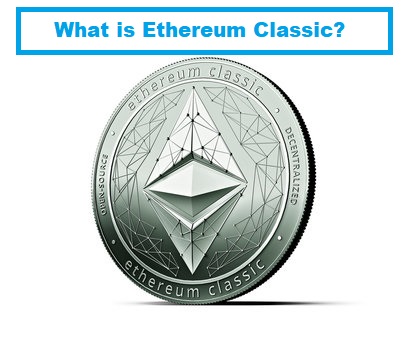The Original Ether — ETC
he native cryptocurrency of Ethereum Classic is also called Ether which can lead to a great deal of confusion. However, the difference lies in their ticker symbols. While the new Ether is denoted as ETH, Ethereum Classic’s crypto is listed as ETC.
In terms of functionalities, both ethers are the same. For instance, Ethereum Classic users pay the gas price for conducting transactions using ETC. Lastly, one can do everything with ETC that they can also do with any other crypto.
ETC is listed on bitFlyer, where you can buy, sell, or trade using this cryptocurrency. If you are interested in the “original Ether”, sign up on bitFlyer today.
About Ethereum Classic
Ethereum Classic (ETC): The Constitution
Most Ethereum Classic projects today rely on Ethereum Classic as a public blockchain, which grants access to a larger audience of users, network nodes, currency, and markets. However, there are often reasons to prefer a private blockchain or consortium blockchain (among a group of trusted participants).
As a substitute for centralized or quasi-centralized trust, public blockchains are secured by crypto-economics – the combination of economic incentives and cryptographic verification using mechanisms such as proof of work or proof of stake, following a general principle that the degree to which someone can influence the consensus process is proportional to the number of economic resources that they can bring to bear. These blockchains are generally considered to be “fully decentralized.”
Partially decentralized, a consortium blockchain is a blockchain where the consensus process is controlled by a pre-selected set of nodes; for example, one might imagine a consortium of 15 financial institutions, each of which operates a node and of which 10 must sign every block for the block to be valid.
A complete private blockchain is actually centralized to one organization for writing permissions. Read permissions may be public or restricted to an arbitrary extent. Likely applications include database management, auditing, etc., internal to a single company. So public readability may not be necessary in many cases at all, though in other cases, public auditability is desired.
All above contribute to the overall Ethereum Classic ecosystem by investing in Ethereum Classic software development. Over time, this translates into software improvements, shared knowledge, and job opportunities.
Concerns of Ethereum Classic
Although both Ethereum and Ethereum Classic offer smart contracts and are after the same market, Ethereum has gained in popularity as the more legitimate of the two networks. Also, Ethereum’s ETH is second only to Bitcoin as the most popular cryptocurrency in the world.3
One of the chief concerns of Ethereum Classic is the potential limitations when it comes to scalability. Typically, the network can handle 15 transactions per second, but that number is far less than payment networks such as Visa, which handles more than one thousand transactions per second. Although Ethereum Classic has gone through many software upgrades, the scalability of its payment systems remains to be one of its biggest challenges going forward.4
Also, security is likely to remain an issue with smart contracts, particularly since Ethereum Classic has already experienced a hack and theft of millions of dollars. These concerns could potentially prevent smart contracts via Ethereum Classic from being used in major financial and real estate transactions.
Regulations of the cryptocurrency market continue to develop, which may or may not change how Ethereum Classic—and other networks—operate. For example, the Security and Exchange Commission (SEC) does not consider Ethereum or Bitcoin securities due to their decentralized networks.5
Future of Ethereum Classic
The future of Ethereum Classic looks less bright than Ethereum since Ethereum is considered the more legitimate of the two networks, especially with the security concerns of Ethereum Classic. Investors have lost confidence in ETC over the years due to hacks into the system, and until ETC can redevelop its code and software to prevent future hacks, Ethereum Classic may have challenges ahead. However, it remains to be seen how the smart contracts will be developed within the Ethereum Classic project and whether they can be adopted for widespread use.
Ethereum Classic Price Prediction 2021
ETH classic gained massive profits this year. ETC began trading at $5.70. Further, the price kept on surging. And eventually, the price surpassed 3 digit milestone reaching ATH $176.06 on May 06, 2021. ETC was hit hard by a market crash. The price fell by 440% reaching $41.51 on July 21st, 2021.
The ETC price has surged gradually from early July with a resurgence of more than 40%. Further, owing to the Chinese market turmoil in the first week of September, the price has fallen to $45.47.
Ethereum Classic Price Prediction for Q4: The price was seen struggling to break out of crucial resistance between $50 to $55. The notable rise in the buy orders would uplift the price action initially to $75, then anticipated to gradually reclaim the previous ATH of $130. On the contrary, the price would plummet between the bottom support of $40 to $45 range. In the case of average buy and sell pressures, the price would end up trading around the $78.458 price zone.
Ethereum Classic Price Prediction 2022
If ETC closes this year hitting the lows, then it might resume next year’s trade with a bearish note. In that case, the Ethereum Classic price starting January may be near $112.48. On a bullish note, the price would resume at around $134.458.
The altcoin has proved to be a stable-priced investment all long! Despite the fact that Crypto markets are unpredictable, ETC has not flapped too much. Thus, by the end of 2022, Ethereum Classic price can reach a high of $208.63.
On the flip side, Unlike new currencies that bagged a huge user base and community, Ethereum Classic still has a limited community circle. In the coming year, with increasing competition in the market, if ETC fails, it can drop to $142.01. However, considering regular buying and selling signals, the average price for 2022 maybe $181.52.
How to Buy Ethereum Classic (ETC)
- Open an online account.
Ethereum Classic is 1 of the most accessible cryptocurrencies on the market. Thanks to its time on block and shared namesake with the biggest smart contract platform in the world, ETC is a popular choice for new investors in crypto. You can get your hands on some through Coinbase, Kraken and Binance.
If you already have an account with one of these centralized exchanges, then you can skip the rest of this step! If not, you’ll need to start with the link below. Creating an account is simple, but you’ll need to verify your identity before getting access to the market. This is an SEC regulation called know your customer (KYC), and you’ll need to input your name, SSN and driver’s license.
- Buy a wallet (optional).
If you’d prefer to store your crypto on an anonymous wallet, then you should use metamask or invest in a Ledger Nano for the most security.
- Make your purchase.
Once you’ve gotten an exchange account and a place to securely store your Ethereum Classic, the only thing left to do is make your purchase. Timing purchases in crypto is always hard, but a good rule of thumb is to wait for a correction and buy the dip.
There are a couple ways to make a purchase, depending on which exchange you’re using. If you’re on plain vanilla Coinbase, then your only option is to place a market order. A market order will fill the desired amount of coins at the market price.
Alternatively, you can switch to Coinbase Pro for free, and get lower fees and access to limit orders. A limit order will wait until the asset reaches a set price before executing your trade. Should the asset not reach that price however, you will never get filled.
Ethereum Classic vs Ethereum — How do they differ?
In terms of basic functionalities, ETC and ETH are the same. For instance, developers can use the open-source code to develop and run their decentralised applications (dApps). They can also create ERC-20 tokens for their applications. For a deeper understanding of these capabilities of ETC, read our guide: What is Ethereum?
Having said that, Ethereum Classic’s primary differentiating factor is its incompatibility with updates on the ETH blockchain. By definition, a hard fork is a backwards-incompatible update. By implementing a new set of rules, the new chain—along with its users (nodes)—is completely cut off from the original chain. Thus, the original chain (Ethereum Classic) cannot access any updates happening on the new chain (Ethereum).
Now, one might ask: What is the need for ETC then, if it cannot be updated? As already mentioned, the foundation of the Ethereum Classic is more ideological than anything else. Its greatest relevance, or significance, so to say, lies in preserving the original and unadulterated Ethereum code. In this sense, ETC serves as an unaltered historical record of the Ethereum network.




